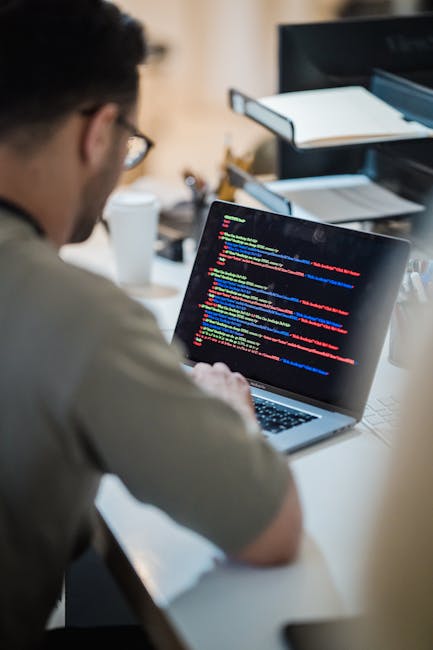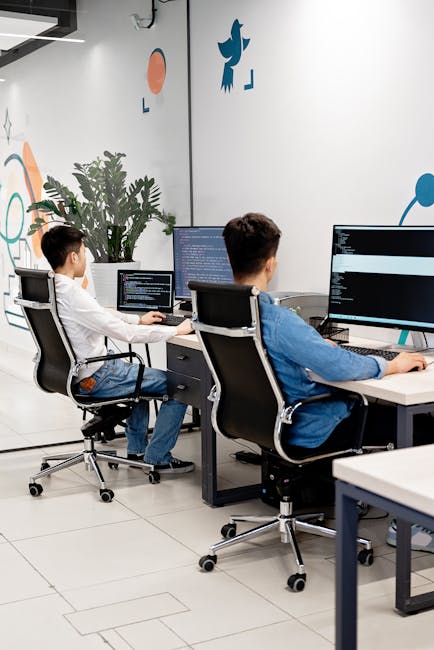Google Cloud Introduces Quantum-Safe Digital Signatures in Cloud KMS to Future-Proof Data Security - Related to 2022, into, a, visual, quantum-safe
Google Cloud Introduces Quantum-Safe Digital Signatures in Cloud KMS to Future-Proof Data Security

Google in the recent past unveiled quantum-safe digital signatures in its Cloud Key Management Service (Cloud KMS), aligning with the National Institute of Standards and Technology (NIST) post-quantum cryptography (PQC) standards. This revision, now available in preview, addresses the growing concern over the potential risks posed by future quantum computers, which could crack traditional encryption methods.
Quantum computing, with its ability to solve problems exponentially faster than classical computers, presents a serious challenge to current cryptographic systems. Algorithms like Rivest–Shamir–Adleman (RSA) and elliptic curve cryptography (ECC), which are fundamental to modern encryption, could be vulnerable to quantum attacks.
One of the primary threats is the "Harvest Now, Decrypt Later" (HNDL) model, where attackers store encrypted data today with plans to decrypt it once quantum computers become viable. While large-scale quantum computers capable of breaking these cryptographic methods are not yet available, experts agree that preparing for this eventuality is crucial.
To safeguard against these quantum threats, Google integrates two NIST-approved PQC algorithms into Cloud KMS. The first is the ML-DSA-65 (FIPS 204), a lattice-based digital signature algorithm; the second is SLH-DSA-SHA2-128S (FIPS 205), a stateless, hash-based signature algorithm. These algorithms provide a quantum-resistant means of signing and verifying data, ensuring that organizations can continue to rely on secure encryption even in a future with quantum-capable adversaries.
Google’s decision to integrate these algorithms into Cloud KMS allows enterprises to test and incorporate quantum-resistant cryptography into their security workflows. The cryptographic implementations are open-source via Google’s BoringCrypto and Tink libraries, ensuring transparency and allowing for independent security audits. This approach is designed to help organizations gradually transition to post-quantum encryption without overhauling their entire security infrastructure.
The authors of a Google Cloud blog post write:
While that future may be years away, those deploying long-lived roots-of-trust or signing firmware for devices managing critical infrastructure should consider mitigation options against this threat vector now. The sooner we can secure these signatures, the more resilient the digital world’s foundation of trust becomes.
Google’s introduction of quantum-safe digital signatures comes at a time when the need for post-quantum security is becoming increasingly urgent. The rapid evolution of quantum computing, highlighted by Microsoft’s recent breakthrough with its Majorana 1 chip, raises concerns over the imminent risks of quantum computers. While these machines are not yet powerful enough to crack current encryption schemes, experts agree that the timeline to quantum readiness is narrowing, with NIST aiming for compliance by [website] of Form.
Phil Venables, a chief information security officer at Google Cloud, tweeted on X:
Cryptanalytically Relevant Quantum Computers (CRQCs) are coming—perhaps sooner than we think, but we can conservatively (and usefully) assume in the 2032 - 2040 time frame. Migrating to post-quantum cryptography will be more complex than many organizations expect, so starting now is vital. Adopting crypto-agility practices will mitigate the risk of further wide-scale changes as PQC standards inevitably evolve.
The tables in a database form the foundations of data-driven applications. Laboring with a schema that’s a haphazard muddle of confusing names and dat......
Modern web development often involves multiple JavaScript files, dependencies from npm, and the need for efficient perform......
Web3 represents the next phase of the internet, shifting from centralized control to a decentralized, blockchain-powered ecosystem. This......
“Translation is the tip of the iceberg”: A deep dive into specialty models

“ of the iceberg”: A deep dive into specialty models.
Olga Beregovaya, VP of AI at Smartling, joins Ryan and Ben to explore the evolution and specialization of language models in AI. They discuss the shift from rule-based systems to transformer models, the importance of fine-tuning for translation tasks, and the role of human translators in ensuring reliable, high-quality output. They also touch on the implications of AI in language education and the challenges faced in implementing LLMs in enterprise workflows.
[website] is awesome for non-blocking tasks, but heavy work can still jam the event loop, slowing things down. That’s where setImmediate helps—it moves ......
Once, the rallying cry of the mobile revolution was, ‘There’s an app for that.’ Today, the new reality is that AI-powered agents are substantially cha......
If you're a developer juggling between work projects, personal side projects, and maybe even some open-source contributions, you're likely familiar wi......
Microsoft Launches Visual Studio 2022 v17.13 with AI-Powered Enhancements and Improved Debugging

Microsoft has released Visual Studio 2022 [website], introducing significant improvements in AI-assisted development, debugging, productivity, and cloud integration. This modification focuses on refining workflows, enhancing code management, and improving the overall developer experience.
One of the attributes in this release is GitHub Copilot Free, which provides 2,000 code completions and 50 chat requests per month at no cost. Copilot has also been improved with AI-powered feature search, enhanced multi-file editing, and shortcut expansions, making it easier to navigate and optimize code. These AI-powered improvements are already receiving positive feedback from developers. Hugo Augusto, an IT consultant, commented:
Adding AI directly inside VS is the biggest addition Microsoft has made in a while. I'm surprised every day at how good the suggestions are and how it understands the context of the source to provide those suggestions.
Another user shared their experience with GitHub Copilot Free, emphasizing how much it has improved their workflow:
I have been playing around with GitHub Copilot Free, and I have to say, it's been a game-changer for my workflow. The advanced debugging capabilities in Visual Studio 2022 [website] are also nice.
Alongside AI improvements, Visual Studio 2022 [website] introduces new productivity aspects. Developers can now set default file encoding, use a more accessible horizontal scrollbar, and quickly navigate recent files in Code Search. There is also an option to indent wrapped lines for improved readability.
Debugging and diagnostics have also seen major enhancements. AI-generated thread summaries in Parallel Stacks simplify debugging complex applications, while the profiler now unifies async stacks for .NET profiling and introduces color-coded CPU swim lanes for easier performance analysis. IEnumerable Visualizer has been updated with syntax highlighting and Copilot-powered inline chat, making LINQ query debugging more efficient.
For Git customers, this version allows developers to add comments directly on pull requests from within Visual Studio. Additionally, AI-powered commit suggestions help catch potential issues early, ensuring higher code quality before merging.
Furthermore, web and cloud developers can now integrate .NET Aspire with Azure Functions for easier serverless application development. Docker Compose introduces scaling support, offering more control over containerized environments. In addition, front-end developers can extract HTML into Razor components, improving code structure and maintainability.
Moreover, Database developers using SQL projects can now take advantage of SDK-style project support in SSDT, improving debugging and schema comparison. Visual Studio also preserves font preferences across themes, ensuring a consistent interface.
More information about the aspects can be found in the release notes.
In the first part of this series, I introduced the background of Kube Resource Orchestrator (Kro). In this installment, we will define a Resource Grap......
We can put an actual number on it. In machine learning, a loss function tracks the degree of error in the out......
Debugging is an essential part of a developer’s workflow—but it’s also one of the most time consuming. What if AI could streamline the process, helpin......
Market Impact Analysis
Market Growth Trend
| 2018 | 2019 | 2020 | 2021 | 2022 | 2023 | 2024 |
|---|---|---|---|---|---|---|
| 7.5% | 9.0% | 9.4% | 10.5% | 11.0% | 11.4% | 11.5% |
Quarterly Growth Rate
| Q1 2024 | Q2 2024 | Q3 2024 | Q4 2024 |
|---|---|---|---|
| 10.8% | 11.1% | 11.3% | 11.5% |
Market Segments and Growth Drivers
| Segment | Market Share | Growth Rate |
|---|---|---|
| Enterprise Software | 38% | 10.8% |
| Cloud Services | 31% | 17.5% |
| Developer Tools | 14% | 9.3% |
| Security Software | 12% | 13.2% |
| Other Software | 5% | 7.5% |
Technology Maturity Curve
Different technologies within the ecosystem are at varying stages of maturity:
Competitive Landscape Analysis
| Company | Market Share |
|---|---|
| Microsoft | 22.6% |
| Oracle | 14.8% |
| SAP | 12.5% |
| Salesforce | 9.7% |
| Adobe | 8.3% |
Future Outlook and Predictions
The Cloud Google Introduces landscape is evolving rapidly, driven by technological advancements, changing threat vectors, and shifting business requirements. Based on current trends and expert analyses, we can anticipate several significant developments across different time horizons:
Year-by-Year Technology Evolution
Based on current trajectory and expert analyses, we can project the following development timeline:
Technology Maturity Curve
Different technologies within the ecosystem are at varying stages of maturity, influencing adoption timelines and investment priorities:
Innovation Trigger
- Generative AI for specialized domains
- Blockchain for supply chain verification
Peak of Inflated Expectations
- Digital twins for business processes
- Quantum-resistant cryptography
Trough of Disillusionment
- Consumer AR/VR applications
- General-purpose blockchain
Slope of Enlightenment
- AI-driven analytics
- Edge computing
Plateau of Productivity
- Cloud infrastructure
- Mobile applications
Technology Evolution Timeline
- Technology adoption accelerating across industries
- digital transformation initiatives becoming mainstream
- Significant transformation of business processes through advanced technologies
- new digital business models emerging
- Fundamental shifts in how technology integrates with business and society
- emergence of new technology paradigms
Expert Perspectives
Leading experts in the software dev sector provide diverse perspectives on how the landscape will evolve over the coming years:
"Technology transformation will continue to accelerate, creating both challenges and opportunities."
— Industry Expert
"Organizations must balance innovation with practical implementation to achieve meaningful results."
— Technology Analyst
"The most successful adopters will focus on business outcomes rather than technology for its own sake."
— Research Director
Areas of Expert Consensus
- Acceleration of Innovation: The pace of technological evolution will continue to increase
- Practical Integration: Focus will shift from proof-of-concept to operational deployment
- Human-Technology Partnership: Most effective implementations will optimize human-machine collaboration
- Regulatory Influence: Regulatory frameworks will increasingly shape technology development
Short-Term Outlook (1-2 Years)
In the immediate future, organizations will focus on implementing and optimizing currently available technologies to address pressing software dev challenges:
- Technology adoption accelerating across industries
- digital transformation initiatives becoming mainstream
These developments will be characterized by incremental improvements to existing frameworks rather than revolutionary changes, with emphasis on practical deployment and measurable outcomes.
Mid-Term Outlook (3-5 Years)
As technologies mature and organizations adapt, more substantial transformations will emerge in how security is approached and implemented:
- Significant transformation of business processes through advanced technologies
- new digital business models emerging
This period will see significant changes in security architecture and operational models, with increasing automation and integration between previously siloed security functions. Organizations will shift from reactive to proactive security postures.
Long-Term Outlook (5+ Years)
Looking further ahead, more fundamental shifts will reshape how cybersecurity is conceptualized and implemented across digital ecosystems:
- Fundamental shifts in how technology integrates with business and society
- emergence of new technology paradigms
These long-term developments will likely require significant technical breakthroughs, new regulatory frameworks, and evolution in how organizations approach security as a fundamental business function rather than a technical discipline.
Key Risk Factors and Uncertainties
Several critical factors could significantly impact the trajectory of software dev evolution:
Organizations should monitor these factors closely and develop contingency strategies to mitigate potential negative impacts on technology implementation timelines.
Alternative Future Scenarios
The evolution of technology can follow different paths depending on various factors including regulatory developments, investment trends, technological breakthroughs, and market adoption. We analyze three potential scenarios:
Optimistic Scenario
Rapid adoption of advanced technologies with significant business impact
Key Drivers: Supportive regulatory environment, significant research breakthroughs, strong market incentives, and rapid user adoption.
Probability: 25-30%
Base Case Scenario
Measured implementation with incremental improvements
Key Drivers: Balanced regulatory approach, steady technological progress, and selective implementation based on clear ROI.
Probability: 50-60%
Conservative Scenario
Technical and organizational barriers limiting effective adoption
Key Drivers: Restrictive regulations, technical limitations, implementation challenges, and risk-averse organizational cultures.
Probability: 15-20%
Scenario Comparison Matrix
| Factor | Optimistic | Base Case | Conservative |
|---|---|---|---|
| Implementation Timeline | Accelerated | Steady | Delayed |
| Market Adoption | Widespread | Selective | Limited |
| Technology Evolution | Rapid | Progressive | Incremental |
| Regulatory Environment | Supportive | Balanced | Restrictive |
| Business Impact | Transformative | Significant | Modest |
Transformational Impact
Technology becoming increasingly embedded in all aspects of business operations. This evolution will necessitate significant changes in organizational structures, talent development, and strategic planning processes.
The convergence of multiple technological trends—including artificial intelligence, quantum computing, and ubiquitous connectivity—will create both unprecedented security challenges and innovative defensive capabilities.
Implementation Challenges
Technical complexity and organizational readiness remain key challenges. Organizations will need to develop comprehensive change management strategies to successfully navigate these transitions.
Regulatory uncertainty, particularly around emerging technologies like AI in security applications, will require flexible security architectures that can adapt to evolving compliance requirements.
Key Innovations to Watch
Artificial intelligence, distributed systems, and automation technologies leading innovation. Organizations should monitor these developments closely to maintain competitive advantages and effective security postures.
Strategic investments in research partnerships, technology pilots, and talent development will position forward-thinking organizations to leverage these innovations early in their development cycle.
Technical Glossary
Key technical terms and definitions to help understand the technologies discussed in this article.
Understanding the following technical concepts is essential for grasping the full implications of the security threats and defensive measures discussed in this article. These definitions provide context for both technical and non-technical readers.
API beginner
 How APIs enable communication between different software systems
How APIs enable communication between different software systemsinterface intermediate
algorithm intermediate
encryption intermediate
 Basic encryption process showing plaintext conversion to ciphertext via encryption key
Basic encryption process showing plaintext conversion to ciphertext via encryption key

